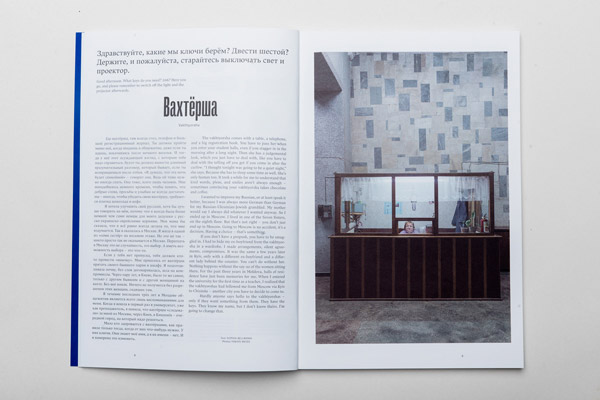Behind the scenes: Noua magazine
One of my favourite presentations at last month’s QVED conference was given by Klaus Neuburg and Sebastian Pranz, who, along with their colleague Fabian Weiss make Noua magazine.
I’d never heard of Noua before and was fascinated by their travelling magazine concept, which uses creative workshops with first-time magazine makers to produce a pop-up publication about life in Eastern Europe. For the most recent issue they went to Moldova and created 148 pages of excellent editorial across three languages in just two weeks. So how exactly did they do that?

Group-based projects can often end up a bit bland or respectful, but Noua is neither of those things. How did you go about getting your participants to produce this really strong editorial vision?
Sebastian: I think they had to find some trust in us. From the first day we tried to create an open atmosphere and say, “Okay, we don’t know as much as you. We’re trying to get a deeper perspective of your country through your eyes.” At first I don’t think they believed us, but then they realised we weren’t just playing – we were really going to print the stuff they wrote, and that’s the point when they really started to work hard.
How far in was that? You only had two weeks to start with.
Klaus: We had to get deep into it quickly. I had the feeling it was maybe two or three days in when they really entered into the project, because they saw there was this opportunity for them to say what they want and to publish themselves.
Sebastian: But even on the afternoon of the first day we began collecting ideas for stories and I was struck by the quality. They were great ideas, things we’d never heard of before, and of course we encouraged them and worked with them, and hopefully the best ideas made it into the magazine.

So why Moldova? What led you there?
Sebastian: It happened by chance. The first ‘publish yourself’ workshop we did was in Georgia about a year ago – a friend of ours works at the Goethe Institute in Tbilisi and we had the idea that we wanted to include him in Froh!, the German-language magazine we also publish.
The theme of the issue was movement, and we had this idea that maybe we could move our editorial team to Tbilisi and do something there, so I contacted him and said, “Okay, how can we do this?” He came up with the idea of us doing a workshop about graphic design, so we set it up but then he sent us some of the students’ work, and we knew we weren’t going to do any kind of teaching there – we had to make a magazine with them.
We were supposed to be there for two days, but we ended up staying for two weeks to make the magazine. That was our first time it was really an adventure, because we weren’t sure whether it was even possible to make an offset printed magazine in three languages over 100 pages in such a short time! But we told them it’s no problem and they believed it, and I think that’s the only reason it actually happened, because they trusted us.
Of course then we had proof of concept and one thing led to another and we had the chance to do it again in Moldova, and now we’re hoping we can repeat the whole thing again in Armenia. We’ve prepared a workshop there and now we’re waiting for the German government to decide whether we’ll get the funding.

There’s a trend emerging – Georgia, Moldova and Armenia. What is it that draws you to these countries?
Sebastian: It’s a matter of personal taste – for myself I can say that I find Eastern Europe very surprising. The different layers of history are visible right there and everything’s a mash up of different eras. You walk around a corner and see something from Soviet times right next to something very modern, and it’s all totally mixed together. That inspires me.
Klaus: At the moment there’s a lot of tension between these two worlds, so it’s an interesting time to be there. But also, the people are very open and they have the energy to make things and change things. They were the first ones to make an independent magazine in Moldova, whereas in Germany you’re the 200th or whatever, so you have a mixture between this tension and opportunity.
Sebastian: Artists and journalists always want to change something in the place they live, but that’s especially true somewhere like Moldova, where so many people are emigrating to Europe, so those who stay behind have a really clear wish to change their society. That makes it a very interesting place to work. Students in Europe are saturated in design because they see so many great things, but they always think so much about what story they can tell. That’s in total contrast to the people we met in the East.
—
Give yourself an editorial surprise – sign up to Stack and we’ll send you a different independent magazine every month






